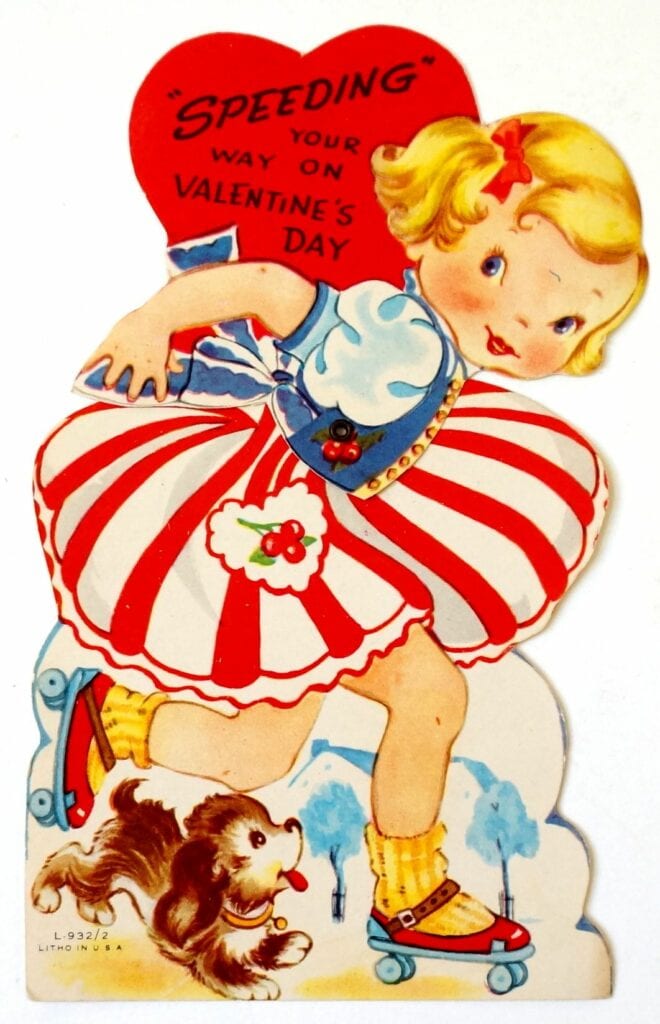Many of us first experienced Valentine’s Day while in grade school. The celebration varied from school to school. However, the overarching theme was giving a Valentine card and or candy to your classmates. In some schools, you drew names and only gave a card, or perhaps candy or a homemade craft for the occasion, to the person whose name you drew. Another variant was there would be a mailbox of sorts and everyone in the class dropped his or her card in the slot to be later sorted and passed out to the recipients. Still another way to celebrate in the classroom was that the teacher would have a row of sacks with each student’s name on them, and each child would place a card in each student’s sack. The sacks usually had candy in them provided by the teacher. Other schools celebrated by having each child construct a personal “mailbox” using a shoebox, into which cards and gifts were placed.

I had no problem with Valentine’s day when I was a youngster other than receiving cards and candy that said “I love you” from those “icky” girls. I did, however, enjoy the confectionary delights that were provided by the parents for our Valentine’s Day party.
So how did Valentine’s Day come about? The history behind Valentine’s day is shrouded in drama and mystery. Although the exact origins of the romantic holiday have yet to be ascertained, historians point to the Romans.
From February 13-15, the Romans celebrated the feast of Lupercalia, which was intended to ward off evil spirits and purify the city, thus bringing health and fertility to the populace. The men would sacrifice a dog and a goat, then they would whip women with the hides of the animals they had slain. Noel Lenski, a historian at the University of Colorado at Boulder, said that the Roman revelers were naked and drunk. The women would line up to be flagellated in the belief it would make them fertile. This barbaric banquet of violence included a “matchmaking lottery,” in which young men drew the names of women from a jar. The romantic duo would, in the modern urban parlance, “hook up” for the duration of the festival. Often these pairings would result in a long-term relationship. “Around the same time, the Normans celebrated Galatin’s Day. Galatin meant ‘lover of women.’ That was likely confused with St. Valentine’s Day at some point, in part because they sound alike.”
The early Romans may also be responsible for the name of the much-celebrated holiday.

Emperor Claudius II executed two men who were both named Valentine, on Feb. 14 of different years in the 3rd century A.D. There are conflicting stories about the two Valentines that were executed and later martyred. One story says that Saint Valentine refused to convert to paganism and was executed by Roman Emperor Claudius II. Prior to his death, he allegedly healed his jailer’s daughter. Another story asserts that a bishop called Saint Valentine of Terni, who was also executed, is the true namesake of the holiday. The date for the Saint’s feast day was set by pope Gelasius I in the 5th century.
Yet another version claims that Saint Valentine was a Roman priest who performed weddings for soldiers who were forbidden to marry because of the edict of a Roman emperor. This “third” Saint Valentine wore a ring with a Cupid on it, which was a symbol of love, thus enabling soldiers to recognize him. It also said that he handed out paper hearts as a reminder of God’s love. This is how St. Valentine is associated with our modern holiday of love.
Because of the confusion surrounding the true identity of St. Valentine, the Catholic Church discontinued liturgical veneration of him in 1969. However, his name remains on its list of official saints, and St. Valentine became known as the patron saint of love.
Historians consider a poem penned by medieval author Geoffrey Chaucer in 1381 to be the origin of the “modern” celebration of Valentine’s Day, in which we celebrate our love for another person.
By the end of the 15th century, the word “valentine” was being used to describe a “lover” in poems and songs. In 18th century England, a book called The Young Man’s Valentine Writer was published.
Hand-made Valentine’s day cards emerged in Europe during the middle ages and eventually spread to the New World. Factory-made cards appeared in the 19th century. In 1913, Hallmark Cards of Kansas City, Mo., began mass production of valentine cards.
Valentine’s Day is loved by some and hated by others, regardless, it is the perfect day to demonstrate your love and appreciation for someone special in your life.










